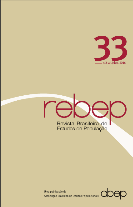Is it time to use more refined indicators to study fertility in Latin America?
DOI:
https://doi.org/10.20947/S0102-30982016c0002Keywords:
Adjusted fertility indicators. Postponement transition. Latin America. UruguayAbstract
The article discusses the appropriateness of refined fertility indicators to evaluate fertility level in Latin American countries. The main advantage of refined indicators is their ability to quantify the proportion of fertility change that is attributable to changes in the quantum of fertility and the proportion that is attributable to changes in the calendar. Lowest-low fertility countries are completing a process of fertility postponement that could only be accurately described when such refined indicators came into use. Despite indications that fertility postponement started in some Latin-American countries, the ability to produce refined estimators for the region is very limited, and a discussion on their advantages, disadvantages and potential is needed. The main properties of these measures are discussed, also which are the ones most appropriate to analyze fertility trends in the region, and how to avoid misleading interpretations. Our main conclusion is that, in the short term, it is more urgent to estimate tempo and quantum indicators by birth order, rather than estimating refined synthetic measures.Downloads
Downloads
Published
How to Cite
Issue
Section
License
Papers published in Rebep are original and protected under the Creative Commons attribution-type license (CC-BY). This license allows you to reuse publications in whole or in part for any purpose, free of charge, even for commercial purposes. Any person or institution can copy, distribute or reuse the content, as long as the author and the original source are properly mentioned.

